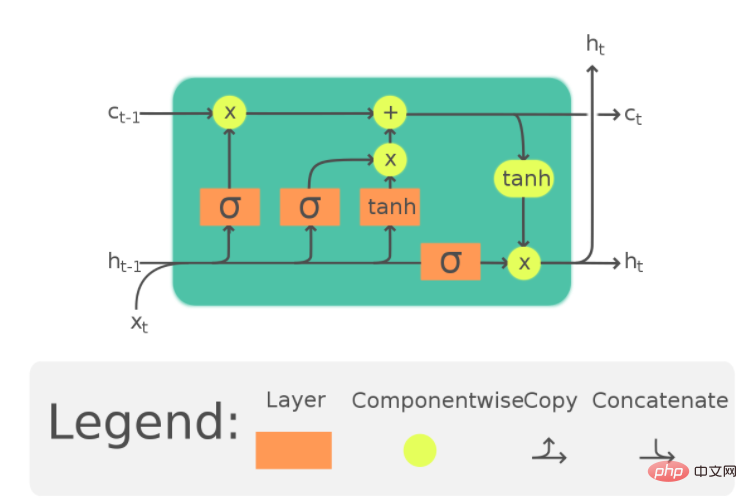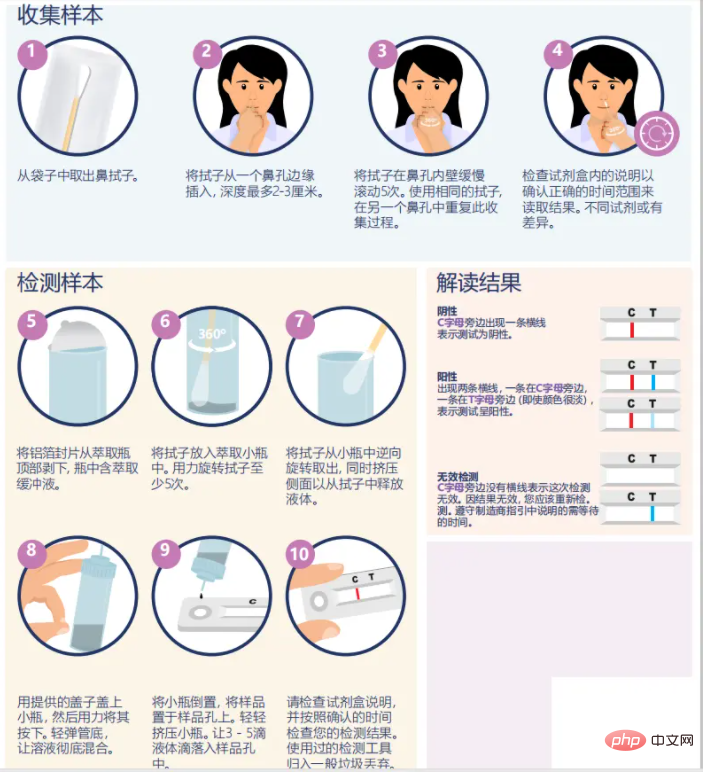 Technology peripherals
Technology peripherals
 AI
AI
 Say goodbye to throat-piercing? AI mobile phone program detects COVID-19 through sound, with an accuracy rate of 89%
Say goodbye to throat-piercing? AI mobile phone program detects COVID-19 through sound, with an accuracy rate of 89%
Say goodbye to throat-piercing? AI mobile phone program detects COVID-19 through sound, with an accuracy rate of 89%
I don’t know what everyone thinks about doing nucleic acid. Anyway, the throat of Digestella has become cocooned.
However, for the overall situation of epidemic prevention and to know and confirm your own health status, it is inevitable to confirm that you are not infected with the new coronavirus through nucleic acid.
Wait... Is there any other way to detect whether I have been tricked?
It’s best not to go out.
Don’t tell me, such technology is really possible.
A study presented at the European Respiratory Society International Congress in Barcelona, Spain, on September 8th showed that a mobile application uses artificial intelligence to You can tell whether you are infected with COVID-19 by your voice.
Currently, the accuracy of this model has reached 89%.
Does this mean that in the future, uploading your own voice at home can replace nucleic acid testing? It feels wonderful to think about it...

Telling whether you are positive by sound is better than rapid antigen testing
New coronavirus pneumonia can affect the upper respiratory tract and vocal cords, causing changes in a person’s voice.
On this basis, Ms. Wafaa Aljbawi from the Institute of Data Science at Maastricht University and her supervisor, Maastricht University Dr. Sami Simon, a pulmonologist at the medical center, and Dr. Visara Urovi, also from the Data Science Institute, decided to investigate the possibility of using artificial intelligence to analyze voices to detect COVID-19 positivity.
They used data from the University of Cambridge’s COVID-19 Sounds app, which contains 893 audio samples from 4,352 healthy and non-healthy participants, 308 of whom had COVID-19. Tested positive.
The app is installed on the user's phone, and participants report some basic information such as demographics, medical history, and smoking status, and then are asked to record some breathing sounds, including coughing three times, using Take three to five deep breaths through your mouth and read short sentences on the screen three times.
The researchers used a speech analysis technology called "Mel-spectrogram", which can identify different speech characteristics, such as loudness and frequency. and changes over time.
"This way we can break down the many properties of the participant's voice," Ms. Aljbawi said. "To distinguish the voices of COVID-19 positive patients and negative normal people, we built different artificial intelligence models and evaluated which model was best suited to classify these cases."
They found LSTM model outperforms other models. LSTM is based on neural networks, which simulate the way the human brain works and identify underlying relationships in data. It excels at timing analysis, which makes it suitable for modeling signals collected over time, such as sound.

In the end, the overall accuracy of this model was 89%, and the ability to correctly detect positive cases (true positives) The rate is 89%, and the ability to correctly identify negative cases (true negatives) is 83%.
“These results show a significant improvement in the accuracy of diagnosing COVID-19 disease compared with state-of-the-art testing methods such as lateral flow testing,” said Aljbawi. The accuracy of the method (rapid antigen test) is only 56%, but the specificity is higher at 99.5%. This is important because it means that the rapid antigen test incorrectly classifies an infected person as negative more often than our test More common. In other words, using the AI LSTM model, we might miss 11/100 cases that would go on to spread the infection, whereas a rapid antigen test would miss 44/100 cases."
Should we do nucleic acid or nucleic acid testing?
The reason why it is compared with rapid antigen testing is because many countries no longer provide free nucleic acid virus testing. ——That is, large-scale nucleic acid testing conducted in China.
Nucleic acid virus detection is a direct detection of collected viral nucleic acids. It has the characteristics of strong specificity and high sensitivity. It is the main method for detecting new coronaviruses.
Rapid antigen testing is relatively simple and can be done by yourself. It mainly distinguishes by detecting the antigen of the virus. It can be used as one of the main basis for the diagnosis of new coronavirus. However, The accuracy is relatively low.
Many countries currently distribute rapid antigen self-test kits, and only those who test positive will require further testing.

Of course, because this kind of self-test package is relatively difficult to operate, the accuracy is not very high. Therefore, if it can be judged as positive through the sound, it can not only save resources, but also obtain relatively accurate results. , is indeed a good thing.
So, although AI performs relatively poorly in terms of false positives, with 17% of people being misdiagnosed as positive, it can be used as a preliminary screening method to allow voice detection to show positive results. If it is positive, go to the next step for testing.
Moreover, this technology is targeted more at low-income countries where nucleic acid testing is expensive and/or difficult to distribute.
As for us, we should do nucleic acid or nucleic acid...
In addition, the researchers said that their results still require a large amount of data To verify, 53,449 audio samples collected from 36,116 participants since the start of the project can be used to improve and validate the accuracy of the model. They are also conducting further analysis to understand which parameters in speech are affecting the AI model.
Related reports:
https://www.news-medical.net/news/20220905/AI-model-detects-COVID-19-infection-in -peoplee28099s-voices.aspx
The above is the detailed content of Say goodbye to throat-piercing? AI mobile phone program detects COVID-19 through sound, with an accuracy rate of 89%. For more information, please follow other related articles on the PHP Chinese website!

Hot AI Tools

Undresser.AI Undress
AI-powered app for creating realistic nude photos

AI Clothes Remover
Online AI tool for removing clothes from photos.

Undress AI Tool
Undress images for free

Clothoff.io
AI clothes remover

Video Face Swap
Swap faces in any video effortlessly with our completely free AI face swap tool!

Hot Article

Hot Tools

Notepad++7.3.1
Easy-to-use and free code editor

SublimeText3 Chinese version
Chinese version, very easy to use

Zend Studio 13.0.1
Powerful PHP integrated development environment

Dreamweaver CS6
Visual web development tools

SublimeText3 Mac version
God-level code editing software (SublimeText3)

Hot Topics
 1664
1664
 14
14
 1423
1423
 52
52
 1317
1317
 25
25
 1268
1268
 29
29
 1242
1242
 24
24
 How to understand DMA operations in C?
Apr 28, 2025 pm 10:09 PM
How to understand DMA operations in C?
Apr 28, 2025 pm 10:09 PM
DMA in C refers to DirectMemoryAccess, a direct memory access technology, allowing hardware devices to directly transmit data to memory without CPU intervention. 1) DMA operation is highly dependent on hardware devices and drivers, and the implementation method varies from system to system. 2) Direct access to memory may bring security risks, and the correctness and security of the code must be ensured. 3) DMA can improve performance, but improper use may lead to degradation of system performance. Through practice and learning, we can master the skills of using DMA and maximize its effectiveness in scenarios such as high-speed data transmission and real-time signal processing.
 How to use the chrono library in C?
Apr 28, 2025 pm 10:18 PM
How to use the chrono library in C?
Apr 28, 2025 pm 10:18 PM
Using the chrono library in C can allow you to control time and time intervals more accurately. Let's explore the charm of this library. C's chrono library is part of the standard library, which provides a modern way to deal with time and time intervals. For programmers who have suffered from time.h and ctime, chrono is undoubtedly a boon. It not only improves the readability and maintainability of the code, but also provides higher accuracy and flexibility. Let's start with the basics. The chrono library mainly includes the following key components: std::chrono::system_clock: represents the system clock, used to obtain the current time. std::chron
 Quantitative Exchange Ranking 2025 Top 10 Recommendations for Digital Currency Quantitative Trading APPs
Apr 30, 2025 pm 07:24 PM
Quantitative Exchange Ranking 2025 Top 10 Recommendations for Digital Currency Quantitative Trading APPs
Apr 30, 2025 pm 07:24 PM
The built-in quantization tools on the exchange include: 1. Binance: Provides Binance Futures quantitative module, low handling fees, and supports AI-assisted transactions. 2. OKX (Ouyi): Supports multi-account management and intelligent order routing, and provides institutional-level risk control. The independent quantitative strategy platforms include: 3. 3Commas: drag-and-drop strategy generator, suitable for multi-platform hedging arbitrage. 4. Quadency: Professional-level algorithm strategy library, supporting customized risk thresholds. 5. Pionex: Built-in 16 preset strategy, low transaction fee. Vertical domain tools include: 6. Cryptohopper: cloud-based quantitative platform, supporting 150 technical indicators. 7. Bitsgap:
 How to handle high DPI display in C?
Apr 28, 2025 pm 09:57 PM
How to handle high DPI display in C?
Apr 28, 2025 pm 09:57 PM
Handling high DPI display in C can be achieved through the following steps: 1) Understand DPI and scaling, use the operating system API to obtain DPI information and adjust the graphics output; 2) Handle cross-platform compatibility, use cross-platform graphics libraries such as SDL or Qt; 3) Perform performance optimization, improve performance through cache, hardware acceleration, and dynamic adjustment of the details level; 4) Solve common problems, such as blurred text and interface elements are too small, and solve by correctly applying DPI scaling.
 What is real-time operating system programming in C?
Apr 28, 2025 pm 10:15 PM
What is real-time operating system programming in C?
Apr 28, 2025 pm 10:15 PM
C performs well in real-time operating system (RTOS) programming, providing efficient execution efficiency and precise time management. 1) C Meet the needs of RTOS through direct operation of hardware resources and efficient memory management. 2) Using object-oriented features, C can design a flexible task scheduling system. 3) C supports efficient interrupt processing, but dynamic memory allocation and exception processing must be avoided to ensure real-time. 4) Template programming and inline functions help in performance optimization. 5) In practical applications, C can be used to implement an efficient logging system.
 How to use string streams in C?
Apr 28, 2025 pm 09:12 PM
How to use string streams in C?
Apr 28, 2025 pm 09:12 PM
The main steps and precautions for using string streams in C are as follows: 1. Create an output string stream and convert data, such as converting integers into strings. 2. Apply to serialization of complex data structures, such as converting vector into strings. 3. Pay attention to performance issues and avoid frequent use of string streams when processing large amounts of data. You can consider using the append method of std::string. 4. Pay attention to memory management and avoid frequent creation and destruction of string stream objects. You can reuse or use std::stringstream.
 How to measure thread performance in C?
Apr 28, 2025 pm 10:21 PM
How to measure thread performance in C?
Apr 28, 2025 pm 10:21 PM
Measuring thread performance in C can use the timing tools, performance analysis tools, and custom timers in the standard library. 1. Use the library to measure execution time. 2. Use gprof for performance analysis. The steps include adding the -pg option during compilation, running the program to generate a gmon.out file, and generating a performance report. 3. Use Valgrind's Callgrind module to perform more detailed analysis. The steps include running the program to generate the callgrind.out file and viewing the results using kcachegrind. 4. Custom timers can flexibly measure the execution time of a specific code segment. These methods help to fully understand thread performance and optimize code.
 An efficient way to batch insert data in MySQL
Apr 29, 2025 pm 04:18 PM
An efficient way to batch insert data in MySQL
Apr 29, 2025 pm 04:18 PM
Efficient methods for batch inserting data in MySQL include: 1. Using INSERTINTO...VALUES syntax, 2. Using LOADDATAINFILE command, 3. Using transaction processing, 4. Adjust batch size, 5. Disable indexing, 6. Using INSERTIGNORE or INSERT...ONDUPLICATEKEYUPDATE, these methods can significantly improve database operation efficiency.



